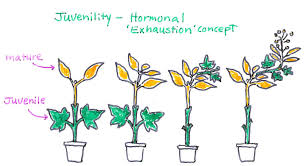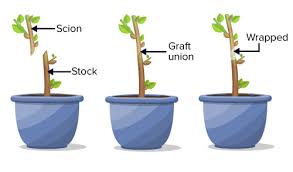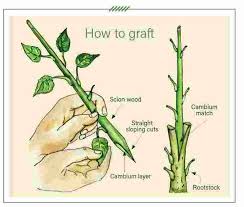Asexual propagation entails the production of new individuals from the same plant. It does not involve the participation of two individuals. Asexual propagation results in the formation of clones of identical individuals.
In this article, different methods of breeding asexually propagated crops will be examined.
Understanding Asexual Propagation and Its Application in Crops
Asexual propagation results in the formation of clones of identical individuals. Plants that rarely produce seeds, except under special conditions, are usually reproduced asexually or vegetatively.
Crops such as bananas, plantains, sugarcane, potatoes, and tea are examples of plants that reproduce asexually. Vegetatively propagated crops are typically highly heterozygous.
There are two primary methods used in breeding asexually propagated crops: clone selection and hybridization.
Read Also: Introduction to Rabbit Rearing
1. Clone Selection Method in Asexual Propagation

In this method, selected improved varieties of plants from a mixed population are multiplied asexually to produce a clone. The selection is based on phenotypic appearance.
One limitation of this method is that new genotypes are not created, as the genotype of a clone does not change unless mutations or chromosomal aberrations occur.
2. Hybridization Method in Asexual Propagation

In this method, improved clones of asexually propagated plants are selected and allowed to grow under conditions that favour flowering and seed setting. These plants are then crossed, and hybrids of selected plants are multiplied by cloning. Selfing is not desirable at any stage, as it leads to a reduction in hybrid vigour.
However, when a back-cross must be done to reduce or eliminate undesirable genes, different varieties are used as the recurrent parent. A back-cross involves crossing a progeny with one of its parents.
Read Also: 10 Health Benefits of Rabbit Meat
Summary of Asexual Propagation in Agricultural Crops

Asexual reproduction is the formation of a new individual from cells of the parent, without meiosis, gamete formation, or fertilisation. There are several types of asexual reproduction. Fission is the simplest form and involves the division of a single organism into two complete organisms, each identical to the other and to the parent.
Fission is common among unicellular organisms such as bacteria, many protists, and some algae like Spirogyra and Euglena, as well as a few higher organisms such as flatworms and certain species of polychaete worms.
A similar form of asexual reproduction is regeneration, where an entire organism may be generated from a part of its parent. The term regeneration usually refers to the regrowth of missing or damaged body parts in higher organisms, but whole-body regeneration occurs in hydroids, starfish, and many plants.
Spores are another form of asexual reproduction and are common among bacteria, protists, and fungi. Spores are DNA-containing capsules capable of sprouting into new organisms. Unlike most seeds, spores are produced without sexual union of gametes, i.e., reproductive cells.
Plants that rarely produce seeds, except under special conditions, are typically reproduced asexually. Clone selection and hybridization are two common methods used in breeding asexually propagated crops.
Do you have any questions, suggestions, or contributions? If so, please feel free to use the comment box below to share your thoughts. We also encourage you to kindly share this information with others who might benefit from it. Since we can’t reach everyone at once, we truly appreciate your help in spreading the word. Thank you so much for your support and for sharing!

